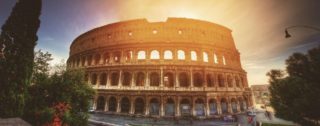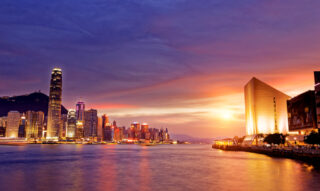Italian language facts
The world’s most musical language and the lingua franca of music, Italian is spoken by around 58 million people in Italy, 24,000 in San Marino, 840,000 in Switzerland, and approximately 5 million in North and South America. Traces can be found in Libya and Somalia as well, both former colonies.
Over the centuries, Italy has produced some of the most remarkable cultural works in the western canon, from the Divine Comedy of Dante to Michelangelo’s frescoes in the Sistine Chapel, from The Prince of Machiavelli to the neo-realist films of Vittorio De Sica, and from Baldassarre Castiglione’s The Courtier to the post-modernist novels of Italo Calvino.
Historically, too, Italy has always been of great importance. In the Middle Ages cities such as Florence and Venice were among the richest and most powerful of Europe. It was Italy that produced the Renaissance, whose culture and values have provided the foundations of much of western life in the last five hundred years.
Today, Italy is one of the world’s leading industrial democracies and italian language services are very popular. It is the seventh largest global market for British exports, and the UK is the third largest supplier to Italy after Germany and France. Italy, the inventor of modern banking and the sixth richest country in the world, is a trailblazer in areas ranging from football to fashion, from food to film.
Linguistically speaking, the Italian language is a member of the Romance group of the Italic branch of the Indo-European family. It is spoken mainly in the Italian peninsula, southern Switzerland, San Marino, Sicily, Corsica, northern Sardinia, and on the north-eastern shore of the Adriatic Sea.
Considered a single language with numerous dialects, Italian, like the other Romance languages, is the direct offspring of the Latin spoken by the Romans and imposed by them on the peoples under their dominion.
Of all the major Romance languages, Italian retains the closest resemblance to Latin. The struggle between the written but dead language and the various forms of the living speech, most of which were derived from Vulgar Latin, was nowhere so intense or protracted as in Italy.
Evolution of the Italian Language
During the long period of the evolution of Italian, many dialects sprang up. The multiplicity of these dialects and their individual claims upon their native speakers as pure Italian speech presented a peculiar difficulty in the evolution of an accepted form of Italian that would reflect the cultural unity of the entire peninsula.
Even the earliest popular Italian documents, produced in the 10th century, are dialectal in language, and during the following three centuries Italian authors wrote in their native dialects, producing a number of competing regional schools of literature.
During the 14th century, the Tuscan dialect began to predominate, due to the central position of Tuscany in Italy and the aggressive commerce of its most important city, Florence. Moreover, of all the Italian dialects, Tuscan departs least in morphology and phonology from classical Latin, and it therefore harmonises best with the Italian traditions of Latin culture.
The three ‘Ambassadors’
Florentine culture produced the three literary artists who best summarized Italian thought and feeling of the late Middle Ages and early Renaissance: Dante, Petrarca, and Boccaccio.
Dante Alighieri: Dante’s Divine Comedy is one of the great works of world literature, and it was also proof that in literature the vulgar tongue could rival Latin. He had already defended his argument in two unfinished treatises, De vulgari eloquentia and Convivio. But to prove his point it needed the Divine Comedy, the masterpiece in which Italians rediscovered their language in sublime form.
Petrarch: Francesco Petrarca was a passionate admirer of ancient Roman civilization and one of the great early Renaissance humanists, creating a Republic of Letters. His philological work was highly respected, as were his translations from Latin into the Vulgate, and also his own Latin works. But it is his love poetry, written in the vulgar tongue, which keeps his name alive today. His Canzoniere had enormous influence on the poets of the 15th and 16th centuries.
Boccaccio: This was a man from the rising commercial classes, whose Decameron has been described as a “merchant’s epic”. It consists of one hundred stories told by characters who are also part of a story that provides the setting for the whole, much like The Arabian Nights. The work was to become a model for fiction and prose writing. Boccaccio was the first to write a commentary on Dante, and he was also a friend and disciple of Petrarch. Around him gathered enthusiasts of the new humanism.
La “Questione della lingua”
The “question of the language”, an attempt to establish linguistic norms and codify the language, engrossed writers of all persuasions. Grammarians during the 15th and the 16th centuries attempted to confer upon the pronunciation, syntax, and vocabulary of 14th-century Tuscan the status of a central and classical Italian speech. Eventually this classicism, which might have made Italian another dead language, was widened to include the organic changes inevitable in a living tongue.
Modern Italian
It was not until the 19th century that the language spoken by educated Tuscans spread to become the language of a new nation. The unification of Italy in 1861 had a profound impact not only on the political scene but also resulted in a significant social, economical, and cultural transformation. With mandatory schooling, the literacy rate increased, and many speakers abandoned their native dialect in favours of the national language.
Contact Us
Click here to get in touchCopyright Notice:
Third parties are allowed to use or reference information on this page for non-commercial use only if they acknowledge this website as the source by linking to it.
Read detailed Terms and Conditions on how to apply for commercial use.











